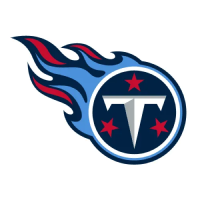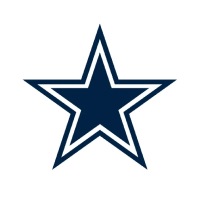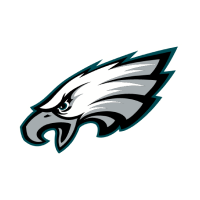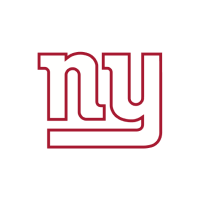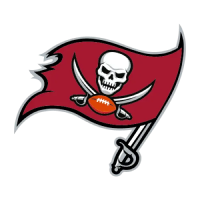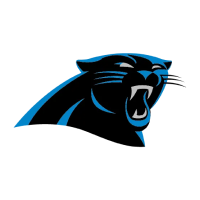From national analysts to Philadelphia Eagles fans, many will jump at every piece of Carson Wentz commentary with reminders that the team around him is terrible, that the coaching staff is struggling, and that not enough was done to build the offense to Wentz’s strengths. All of those claims have been true at times this season, but they’ve also been discussed ad nauseam. On any given Sunday of Philadelphia football, Wentz’s poor play was just as much of a limiting factor on the team as any other roster weakness or coaching decision.
The simple difference between the Eagles on Sunday and the Eagles of 2020 was that Jalen Hurts played, and Wentz didn’t.
This showed up in multiple spots, and the value was easy to see. The biggest thing Hurts did on Sunday was simply not take any sacks.
https://twitter.com/MichaelDavSmith/status/1338474336580198401
Part of the credit here goes to Doug Pederson and the Eagles’ offensive design. They moved Hurts out of the pocket as much as possible, especially early in the game, using play-action to slow rushers and create easy, half-field reads for Hurts on the move. Hurts was able to use his legs as a check-down when already outside of the pocket as well. Hurts was only pressured on 26.5% of his dropbacks, which is a league-average number.
But Hurts was also great when pressured and cognizant of his strengths. Hurts was quick to leave the pocket when he felt protection fading and was an effective quick-game passer when given an open first read. On plays in which Hurts held the ball fewer than 2.5 seconds, as charted by PFF, Hurts was 10-of-13 with a touchdown.
So Hurts executed the quick game and found some success as a scrambler—namely, four carries for 50 yards. Those positive plays are nice, but it’s the absence of the negative play that really makes the difference. The Eagles averaged only 5.6 yards to go on third downs against the Saints—their only two double-digit distances, 10 and 11 yards, were the result of third-down procedural penalties. Altogether, the Eagles only had two runs for loss on the day despite running the football 36 times altogether.
The Eagles were able to stay ahead of the sticks, which got them to short fourth downs, allowing Doug Pederson to re-access his aggressive tendencies. He went for four fourth-down conversions, converting on two, including Hurts’ touchdown pass to Alshon Jeffery early in the red zone. Getting into manageable second and third downs also kept the Eagles and Hurts from needing to push the football down the field—Hurts only had one attempt that traveled more than 15 yards downfield.
https://twitter.com/BenjaminSolak/status/1338293640922357761
Hurts’ passing spray couldn’t look more different from recent Wentz charts, which show a heavy dedication to the middle of the field. The Eagles’ coaching staff always seemed oriented on getting Wentz into a passing game rhythm in the hopes of improving his quality of play by boosting his early confidence, which spelled full-field route concepts that Wentz could pick and choose off of pre-snap looks. The coaching staff either didn’t trust Hurts to make these decisions or had no interest in establishing his rhythm and reads, and accordingly employed a passing game that feasted on the sidelines, preventing Hurts from throwing into the weeds of underneath zone defenders.
Again, this combination of coaching staff decisions and Hurts’ improved play relative to Wentz allowed the Eagles to avoid another back-breaking mistake: interceptions. Hurts threw no interceptable passes on Sunday, electing to throw the ball away in either sack or scramble-prayer situations. While a lack of aggressive passing kept Hurts’ yards/attempt at 5.6, a concerning number in an anemic passing attack, by just avoiding backbreaking negative plays the passing game felt more effective. The Eagles only had two three-and-outs in the game and never gave New Orleans better field position than the Saints’ 40-yard line until the end-of-game fumble—a huge relief for a defense accustomed to suffering short fields and quick turnarounds. It was complementary football at its best.
In that Hurts didn’t make huge mistakes, that same Eagles roster that constantly exacerbates Wentz’s failures with mistakes of their own, suddenly had some juice. Receivers made tough catches and young linemen picked it up. The defense took pride in keeping an explosive Saints offense neutered and giving their own quarterback short fields to ease his job. There was a renewed energy in Philadelphia, not just for the sense that Hurts could help them win, but for the sense that he wasn’t going to help them lose.
While the Hurts model of offense will be tested in the next few weeks, and innovations must be made to keep the team afloat, mistake-free football from a rookie passer in his first start is undoubtedly an above-expectation performance. The hard truths of the Eagles’ suffering roster and haphazard coaching staff remain, but Hurts’ cool head and steady hand guided that depleted team to a huge win. For a player’s first career start, you couldn’t ask for much more.
Filed In
Related Articles
NFL Draft
Arik Gilbert Doesn’t Need Big Workload To Be A Top NFL Draft Pick
- Aug 22, 2022
NFL Draft
2023 NFL Mock Draft: Marino 1.0
- Aug 22, 2022
Written By









